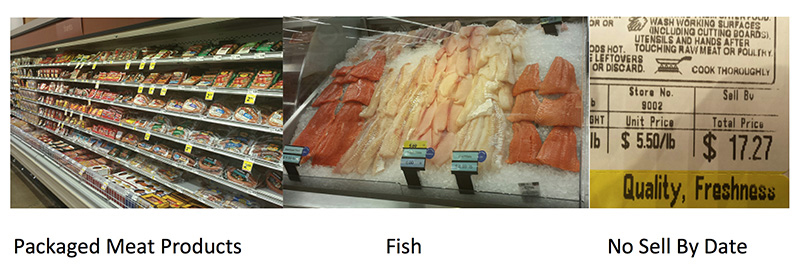With the passage of FSMA, any location that handles food for public consumption must implement Hazard Analysis and Critical Control Points (HACCP) plans to reduce food safety risks across the food chain. Many businesses with multiple locations in the restaurant and retail industries are finding that traditional paper-based methods of record keeping are no longer adequate to comply with the FSMA. By abandoning paper-based systems and adopting cloud-based technology, restaurant and retail locations can embrace and enforce stronger food safety cultures and help eliminate human error.
According to the CDC, each year an estimated 48 million Americans get sick, 128,000 are hospitalized and 3,000 die from foodborne disease.
Why? The process of purchasing, transporting, preparing and serving food heavily revolves around individual human behaviors related to cooking, cleaning, handling and refrigerating food. When employees do not follow the correct processes and procedures, it can lead to accidental food safety issues.
FSMA & HACCP Plans
In an effort to shift from responding to food contamination incidents after the fact to proactively preventing them, the FDA introduced FSMA in 2011. To allow businesses time to adjust to new rules and regulations, the FSMA requirements are implemented in phases, which began in September 2015 and will continue through May 2016.
As part of a larger food safety initiative, FSMA requires any business that handles food for public consumption to implement a HACCP plan. The purpose of the plan and its procedures is to identify potential hazards in any food-related processes where a lapse in attention or failure to complete a task could turn a potential hazard into an actual one.
The three main components of an HACCP plan that are required to be documented are:
- Hazards: Evaluate potential hazards that exist in the enterprise. For example, how, when and why Salmonella or Listeria could migrate into a finished product
- Critical Control Points: Identify critical control points where failures could occur, such as when products are moved from preparation to the sales floor
- Preventative Steps: Establish the preventative steps that must be followed at each critical control point to reduce hazards, for example, interval checks to make sure correct temperatures, whether hot or cold, are consistently maintained
FSMA also mandates a record of food safety compliance to ensure a company follows its HACCP plan. Every location must document all actions, including ongoing monitoring of when a problem was spotted and corrective actions taken. These records, which have traditionally been created and maintained with pen or pencil and paper logs, must be kept for a minimum of two years.

Compliance Challenges
With multiple locations and an ever-changing labor force, it is difficult for companies to be confident that the food they sell is safe and that every employee is acting diligently when it comes to food safety across the entire enterprise.
In a busy restaurant or retail environment with ever-changing customer demands for a variety of different products and services, a food safety culture and plan can unintentionally become compromised.
With local farmers to international food manufacturers supplying fresh, frozen and prepared foods and a variety of workers in contact with each for different reasons, it can be difficult to track food safety procedures.
Add an inefficient, manual, paper-based food safety record-keeping system that does not proactively remind employees to complete tasks or prompt corrective actions when needed, and you are opening the door to potential problems.
It’s Time to Break the Pencil
Companies must implement the highest standards of food safety processes at all levels and locations. Once a food safety culture is defined, it needs to be enforced every day. Employees should be well trained on policies, feel empowered and mandated to behave consistently.
A major part of the solution is abandoning traditional pen or pencil and paper-based record-keeping systems. By adopting technology, restaurants and retail locations can embrace and enforce stronger a food safety culture and help eliminate human error.
Electronic and intelligent checklists and digital record keeping on mobile, handheld solutions that are integrated into the Internet of Things (IoT) represent a major technological advancement over what was previously possible, and can manage and dynamically influence food safety processes. Through connectivity to the cloud, mobile, digital solutions can be deployed anywhere throughout a business, from warehouses to sales floors, to prompt the desired behaviors and provide a detailed, accurate audit trail of completion. Devices can also keep track of relevant safety alerts and recalls to improve efficiencies and initiate steps that may not be part of a typical routine.
Daily employee work schedules can be preloaded and custom electronic-based checklists and templates can be built specifically around potential hazards to manage employee tasks and processes. Any missed steps or violations are flagged for easy correction.
As tasks are completed, data is electronically gathered and transmitted directly to the cloud where it can be stored, analyzed and reported for compliance.
In addition, through the cloud and IoT, employees at various levels of an organization, from corporate headquarters to store managers, can view and access real-time data from each location. New information can be uploaded from any location and automatically distributed to a particular store, region or all locations across an enterprise. Enterprise-wide access helps ensure all locations are practicing the most up-to-date HACCP plan and procedures.
Digital food safety solutions have many benefits for a business:
- Overall Food Safety: Ensures critical control points are monitored and proper corrective actions are taken when necessary
- Higher Performance: Employees are reminded to complete assigned tasks, so more tasks are completed on time with fewer misses
- Audit Trail: Detailed, automated audit trail of who completed the action, what time it was completed and the data retrieved from the action
- Process Improvement: A single database of comprehensive information detailing timing, missed checklists, commonly missed items and top violations to help improve overall processes
- Cost Savings: Fewer resources are needed to complete food safety inspections, a 60% reduction in time compared to pen or pencil and paper-based systems1
- Quality Improvement: In addition to HACCP compliance, the information gathered can be used for quality control. For example identifying where there has been over- or under-cooking in the food preparation process
Handheld, wireless and cloud-based technologies can serve as more accurate, reliable and efficient systems. Electronic systems are part of the solution for businesses to comply with new FSMA regulations and improve food safety procedures. When implemented properly, these technologies can help turn food safety in a positive direction and potentially avoid the next foodborne illness outbreak.
Reference
- National Grocers Innovation Center, Center for Advancing Retail Technology. Intelligent Checklist for Quality and Safety in the Supermarket. Retrieved from http://info.partech.com/whitepaper-intelligent-checklist-for-food-safety























